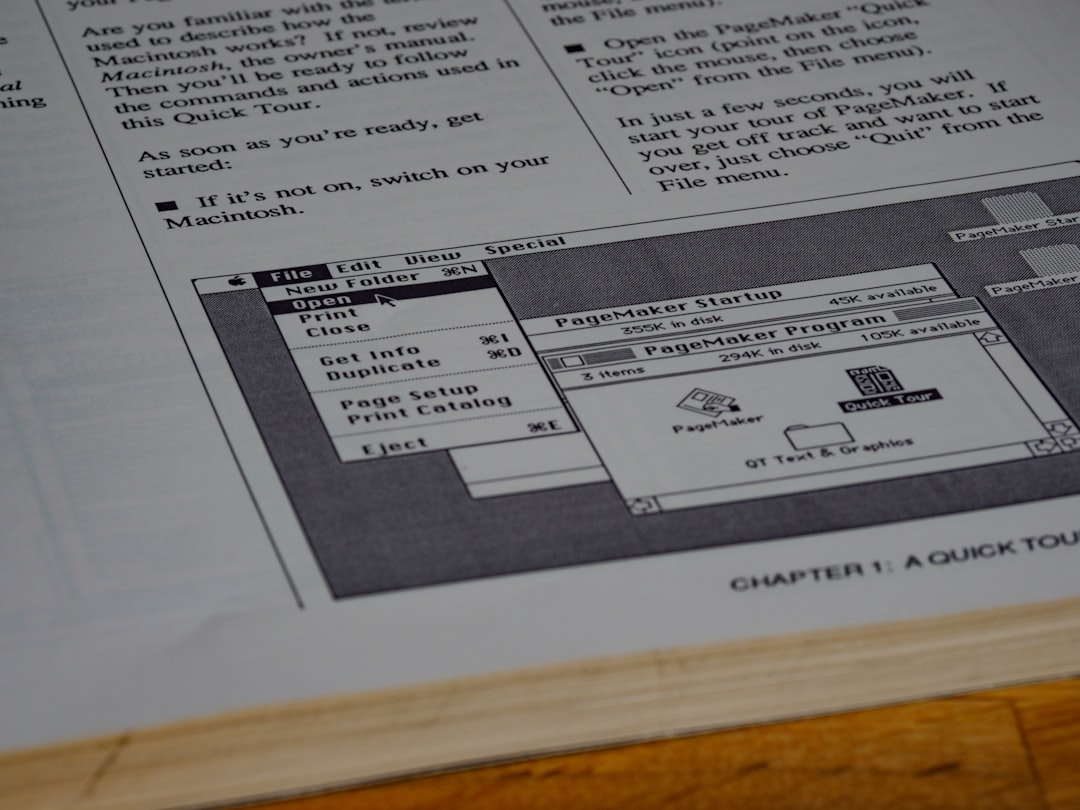

Engage prospects with a scan and streamline customer engagement with FREE QR code marketing tools by Sona – no strings attached!
Create a Free QR CodeFree consultation

No commitment

Engage prospects with a scan and streamline customer engagement with FREE QR code marketing tools by Sona – no strings attached!
Create a Free QR CodeFree consultation

No commitment
QR codes have evolved from novelty to necessity for firms that rely on printed materials. In legal printing services, they bridge the gap between physical assets and measurable digital actions. A single scan from a brochure, intake packet, or appointment card can route a prospective client to a secure portal, a calendar for booking, or a short form that enriches your CRM. The best part is that they work instantly across most smartphones, without an app and without friction. To connect your print with digital, consider proven print + digital tactics.
Law firms and legal service providers are under pressure to unify offline and online touchpoints. Clients expect to start with print and seamlessly continue online for consultations, document uploads, or progress updates. Yet much of that engagement remains invisible when it starts on paper. Anonymous interest stalls follow-up, reduces conversions, and makes ROI hard to prove, as noted in the ISBA overview.
Embedding QR codes into your legal printing workflow turns every printed asset into a measurable, client-centric touchpoint. From intake to case updates to reviews, QR codes enable faster actions, richer data, and smarter marketing. The result is a connected journey that improves conversion rates, streamlines operations, and gives you the visibility you need to optimize spend and outcomes.

QR codes turn physical materials into gateways for measurable outcomes. In legal printing services, they remove the friction that often stalls a client’s progress by making the next step obvious and immediate. When a prospect can scan a card to book a consult, upload a document, or access a secure portal, you reduce drop-off and create a trackable event that your team can act on.
Start by identifying where analog processes slow you down or obscure intent. Paper forms that require manual entry, appointment cards with static phone numbers, and brochures that lack measurable calls to action are all candidates for QR-enabled improvements. Replacing these with dynamic codes connected to digital destinations ensures each interaction is discoverable, attributable, and primed for follow-up.
Modern, QR-enabled print makes a once-siloed channel measurable and agile. For instance, a family law practice can replace static pamphlets with dynamic codes that shift offers by season and update landing pages without reprints. A workers’ compensation firm can put scan-to-intake on wallet-sized cards for job sites, capturing more cases at the moment of need. Legal printing solutions that incorporate QR codes allow your materials to evolve, so your message and next steps always match the moment.

Legal printing services exist at the front line of client communication. From business cards to court packets, these materials often represent the first or most frequent touchpoint. QR codes inject speed, data, and flexibility into those moments so your marketing, intake, and client services work in concert rather than in silos.
The most important wins are practical and measurable. QR codes shorten the distance between awareness and action, while giving your team the analytics to improve. When a client can scan a printed appointment card to confirm or reschedule in one tap, you keep the schedule tight. When a prospect can scan a brochure to start intake, your team captures a hot lead that might otherwise disappear. For broader strategy, see qr codes in marketing.
Think about common legal print materials. Appointment cards with a scan-to-confirm link reduce no-shows. Court-ready folders with scan-to-upload reduce staff time chasing documents. Event flyers with scan-to-consult drive booked meetings and supply immediate attribution. In each case, the QR code is not a tech gimmick, it is a practical bridge from interest to action.

Different QR formats unlock different outcomes. Legal printing services benefit from a clear playbook that matches format to action so every scan serves a purpose and feeds high-quality data back to your systems.
For most law firms, dynamic QR codes are the default choice for campaigns and public placements because they are editable and trackable. Static codes still have a place for truly permanent resources like a universal contact card or a standard office map. A platform like Sona QR lets you manage formats centrally, update destinations as content evolves, and report on performance without touching the original print.

The best QR deployments meet clients where they already are: in your office, at events, and in moments when they are considering legal help. By placing unique, context-aware codes in these locations, you convert passive interest into measurable actions and build audiences for retargeting.
Start by auditing your highest-visibility print assets and most trafficked spaces. Identify any point where a client or prospect might need to take a next step but must currently call, email, or type a URL. Each of those steps is a chance to drop off. Each is also a prime candidate for a QR-powered shortcut that preserves momentum.
These placements combine convenience for the client with insight for your team. The outcome is a cleaner pipeline, less manual work, and a steady stream of trackable signals that support smarter marketing and service decisions.
Legal printing services intersect with key client moments, which makes them ideal for catalyzing action. The following use cases convert interest into progress and give your team actionable data.
These use cases are simple to implement but powerful in aggregate. Each scan becomes a datapoint you can segment by placement, practice area, or audience. Over time, you will see which materials produce serious interest and which messages or formats need improvement.
Every QR scan carries context: where it happened, when, and what the person wanted to do. By deploying multiple codes across your print ecosystem, you can turn those moments into meaningful audience segments for retargeting, nurturing, and sales alerts. For tactical steps, see Sona’s Playbook titled Intent-Driven Retargeting: Driving High-Impact Campaigns with First-Party Intent Signals.
The key is to assign a clear purpose and metadata to each code. A brochure code for family law consults should not share a destination or tag with a court signage code for document uploads. Unique codes by journey stage and practice area let you distinguish awareness from intent and triage follow-up accordingly.
In legal services, helpful distinctions include new prospects versus current clients, practice area interest such as family law versus immigration, and urgency signals like scans on appointment cards versus resource guides. With Sona QR, these distinctions become automatic, and your retargeting becomes a function of real behavior instead of guesswork.
QR codes connect the dots across channels so you can orchestrate a cohesive client journey. Instead of treating print as an isolated tactic, you can integrate it with web, email, social, and events. Each scan is a live signal that helps you respond faster and more intelligently. For measurement frameworks, read Sona’s blog post titled Single vs Multi-Touch Attribution Models.
Begin by mapping the journey for a typical matter. Identify where print materials appear and what the next digital step should be. Then assign a code, a destination, and a follow-up rule for each touchpoint. When this is done at scale, you have a multi-channel engine that adapts to the client and informs your strategy in real time.
QR codes serve as offline onramps to your digital marketing engine. With a centralized platform such as Sona QR, you can create and manage codes, monitor performance by placement and message, and sync results to your CRM and ad platforms. The outcome is alignment across teams and channels, all informed by real client behavior.
A well-run QR initiative follows a repeatable process from planning to performance. Use the steps below to launch faster, improve quality, and capture the data you need for optimization.
Start with one high-impact workflow. In legal printing services, common goals include increasing completed intakes from brochures, reducing no-shows with scan-to-confirm cards, or capturing post-consult reviews from a take-home card. A clear use case keeps design tight and messaging specific. To encourage completion, consider this Google reviews guide.
Choose static or dynamic codes based on flexibility and analytics needs. Static codes work for permanent resources like a general contact card. Dynamic codes let you edit destinations after printing, capture analytics, and power retargeting.
Design affects trust and scan rate. Branded codes with clear CTAs outperform generic ones. Ensure your code is placed where it will be noticed and sized for typical scanning distance.
Roll out your code on materials with the most traffic or strategic value. Assign unique codes to each placement so you can evaluate performance by channel and creative.
Measurement is the engine of improvement. Use analytics to learn which materials and messages drive action, then iterate intentionally.
When these steps become muscle memory, your team can spin up new QR campaigns quickly and confidently. Standardized processes also make it easier to collaborate with vendors and internal stakeholders while preserving brand quality and legal compliance.

Legal printing has historically been hard to measure. You can count prints, but not progress. QR codes change that, creating a digital breadcrumb each time someone acts on a printed message. The result is visibility from scan to outcome, which supports better decisions and more accountability. For a deeper framework, read Sona’s blog post titled The essential guide to offline attribution: maximizing ROI through offline channels.
The benefits compound when scan data connects to your CRM and marketing platforms. You see which channels drive consultations, which messages convert faster, and which audiences prefer self-serve versus outreach. This closes the loop on spend and elevates the sophistication of your growth strategy.
This approach turns every printed asset into a performance channel with clear KPIs. Your team can double down on winning placements, retire unproductive spend, and tell a data-driven story about how print accelerates growth in tandem with digital.
Maximize ROI by treating QR codes as part of a living system that you monitor, learn from, and improve. A handful of practical habits will raise scan rates, sharpen attribution, and keep momentum high.
Firms that institutionalize these practices create a virtuous cycle. Better placements and CTAs lead to higher scans, which generate clearer insights, which inform smarter creative and distribution decisions. Over time, QR codes become a standard part of your client experience and a reliable contributor to growth.
QR codes are not just a convenience, they are a strategy. For legal printing services, they transform every brochure, card, and packet into a digital entry point that captures intent and converts it into action. That shift simplifies client experiences, reduces operational friction, and gives your team the data it needs to invest wisely.
Here is the value in plain terms:
With Sona QR, you can generate dynamic, branded codes, centralize management, and track scans across placements. Pair it with Sona.com to connect QR engagement to pipeline and revenue through identity resolution and attribution. Start creating QR codes for free.
QR codes have transformed legal printing services from static document delivery into dynamic, measurable client engagement channels. Whether it’s streamlining client acquisition, enhancing document interaction, or enabling seamless verification and tracking, QR codes replace outdated processes with instant, mobile-friendly actions that capture real-time data—turning every printed piece into a powerful conversion tool.
Imagine knowing exactly which legal documents are accessed most frequently and using that insight to tailor follow-ups or upsell services instantly. With Sona QR, you can create dynamic, trackable QR codes in seconds, update campaign details without reprinting legal materials, and connect every scan directly to client engagement and revenue growth. No missed leads, no lost opportunities—just smarter, more efficient legal marketing.
Start for free with Sona QR today and transform every printed document into a gateway for client acquisition, retention, and measurable business success.
QR codes enable clients to instantly take next steps like booking consultations, uploading documents, or accessing portals directly from printed materials, reducing friction and increasing measurable engagement.
QR codes bridge offline and online channels by making print materials trackable, enabling faster client actions, capturing richer data, improving conversion rates, and allowing dynamic content updates without reprinting.
Law firms map client journeys to assign QR codes on print assets that link to relevant digital destinations, enabling seamless transitions across web, email, social, and events while tracking and optimizing engagement.
QR codes can link to web pages, secure intake forms, vCards, SMS or email templates, Wi-Fi access, downloadable documents, app downloads, and client portals to serve various legal marketing needs.
By using dynamic QR codes with analytics platforms, law firms can capture scan data by time, location, device, and placement, integrate this data into CRMs, and attribute scans to outcomes like bookings and revenue.
Use Sona QR's trackable codes to improve customer acquisition and engagement today.
Create Your FREE Trackable QR Code in SecondsJoin results-focused teams combining Sona Platform automation with advanced Google Ads strategies to scale lead generation

Connect your existing CRM

Free Account Enrichment

No setup fees
No commitment required

Free consultation

Get a custom Google Ads roadmap for your business






Launch campaigns that generate qualified leads in 30 days or less.
